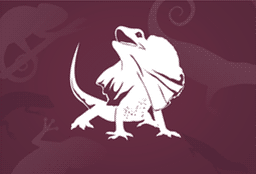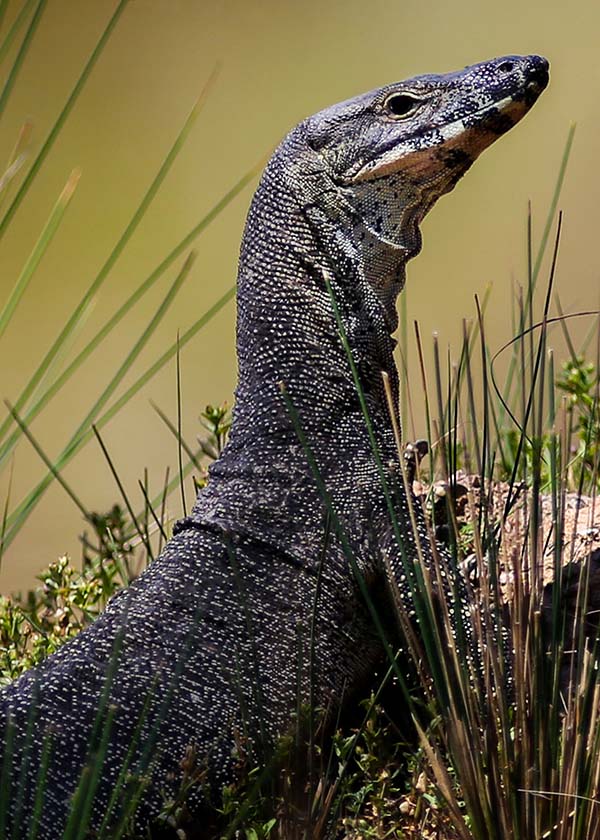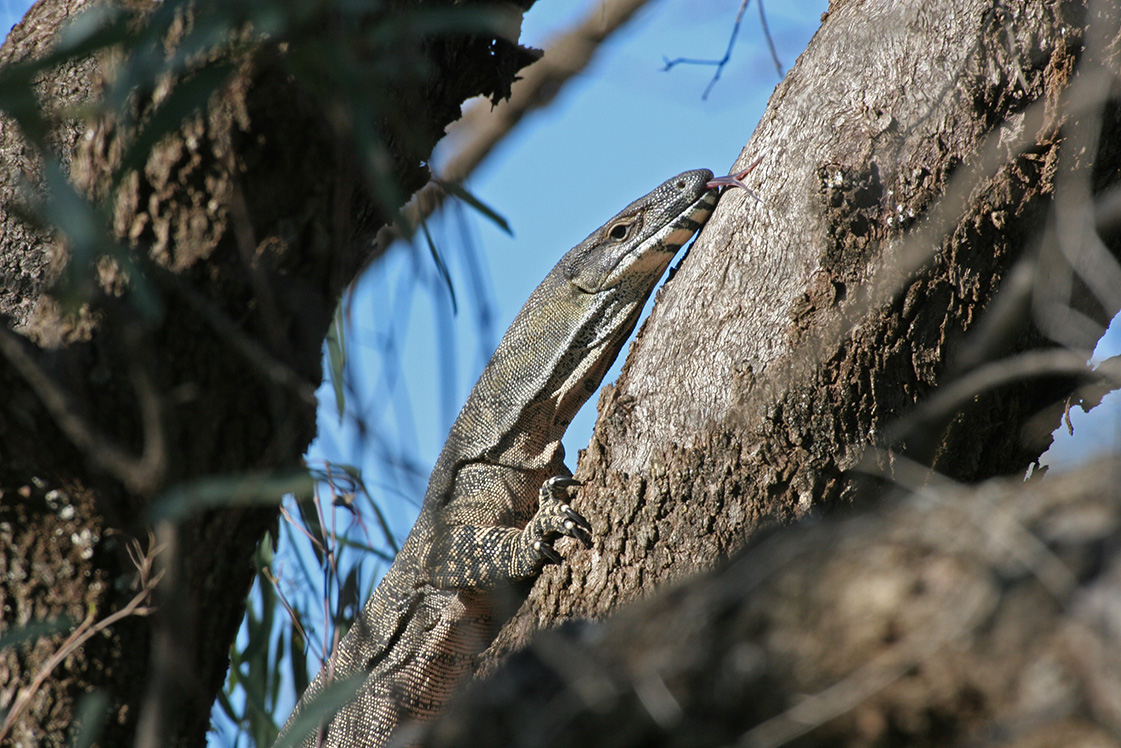Found in two broad forms. The main form is dark grey to dull blueish-black with numerous, scattered, cream-colored spots. The snout is marked with prominent black and yellow bands extending under the chin and neck. The tail has narrow black and cream bands which are narrow and get wider towards the end of the tail.
The other type, known as Bells form, is typically found in dryer parts of NSW and Queensland. It has broad, black and yellow bands across the body and tail. Close up, these bands are made up of various spotted patterns.
Also known as the Tree Goanna.
Size
About 55cm long (head and body); 140 cm long (head to tail). Some may grow up to 2.1 m long (head to tail).
Behaviour
Diet
The Diet of the lace monitor is varied, including insects, other reptiles, small mammals, birds, eggs and carrion (dead or decaying flesh).
Movement
Terrestrial and often arboreal (tree dwelling), an active lizard that forages over large areas.
Breeding
Mating takes place in Spring and Summer where males will gather around and mate with receptive females. The female lace monitor will lay between 6-12 eggs, usually laid in termite mounds.
They reach sexual maturity at about 4 - 5 years of age.
Field Guide
Improve your identification skills. Download your Lace Monitor guide here!





